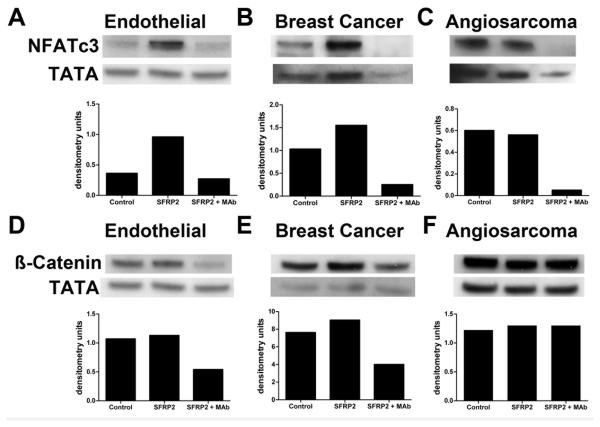Figure 3.
Effect of SFRP2 and SFRP2 mAb on Wnt signaling in endothelial cells.
2H11 endothelial cells, MDA-MB-231 breast cancer cells, and angiosarcoma cells were treated with control, mouse recombinant SFRP2 (7nM), or SFRP2 (7nM) + SFRP2 mAb 100 μg/ml) for 1 hour. Cells were lysed and nuclear fraction was collected and subjected to Western blotting with antibodies to ß-catenin or NFATc3, and TATA (nuclear loading control. Dosimetry readings were normalized to TATA levels. Treatment with SFRP2 increased nuclear NFATc3 compared to control in endothelial cells(A), MDA-MB-231 cells (B) and angiosarcoma cells (C); which was inhibited with the SFRP2 mAb. Nuclear β-catenin was elevated in control 2H11 endothelial cells (D) and MDA-MB-231 breast cancer cells (E), and this was not decreased with treatment with SFRP2; rather the SFRP2 mAb decreased nuclear β-catenin in both cell types (D, E). In SVR angiosarcoma cells, nuclear β-catenin was elevated in control cells and was not altered with SFRP2 recombinant protein (F) nor the SFRP2 mAb. Full length gels are in Supplemental Fig. 4.

